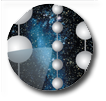
 |
Reconstruction
Algorithm Comparison |
|
» Introduction » Monte Carlo sample » Processing times » Trigger level » effective area » angular resol. vs energy » efficiency » energy spectra » angular resol. vs declination » fakes » summay table » comparison 9, 21, 80 lines » check retriggering » Cut set 1 » effective area » angular resol. vs energy » efficiency » energy spectra » angular resol. vs declination » fakes » summay table » comparison 9, 21, 80 lines » check retriggering » Event rates vs zenith cut » corsika events » cosmic signal » atmospheric neutrinos » Preliminary conclusions Comments to: zornoza@icecube.wisc.edu |
|
||||||||||||||||||||